There’s an old saying that you should never cheap out on anything between you and the ground. Mattresses, shoes, tyres. It makes sense. Try and save a few bucks on a mattress and you’re potentially dooming yourself to a good few years of bad sleep. Poor quality tyres can have you slipping and sliding on and off the road. And bad shoes will ruin your day after an hour or two on your feet. It’s a solid list, but we reckon it should be expanded. Never cheap out on things that stop you smacking into a wall at high speed either.
If your 4X4s tune or suspension aren’t up to snuff it can leave you feeling frustrated. But if your brakes aren’t cutting the mustard? You’re going to have a real bad day.
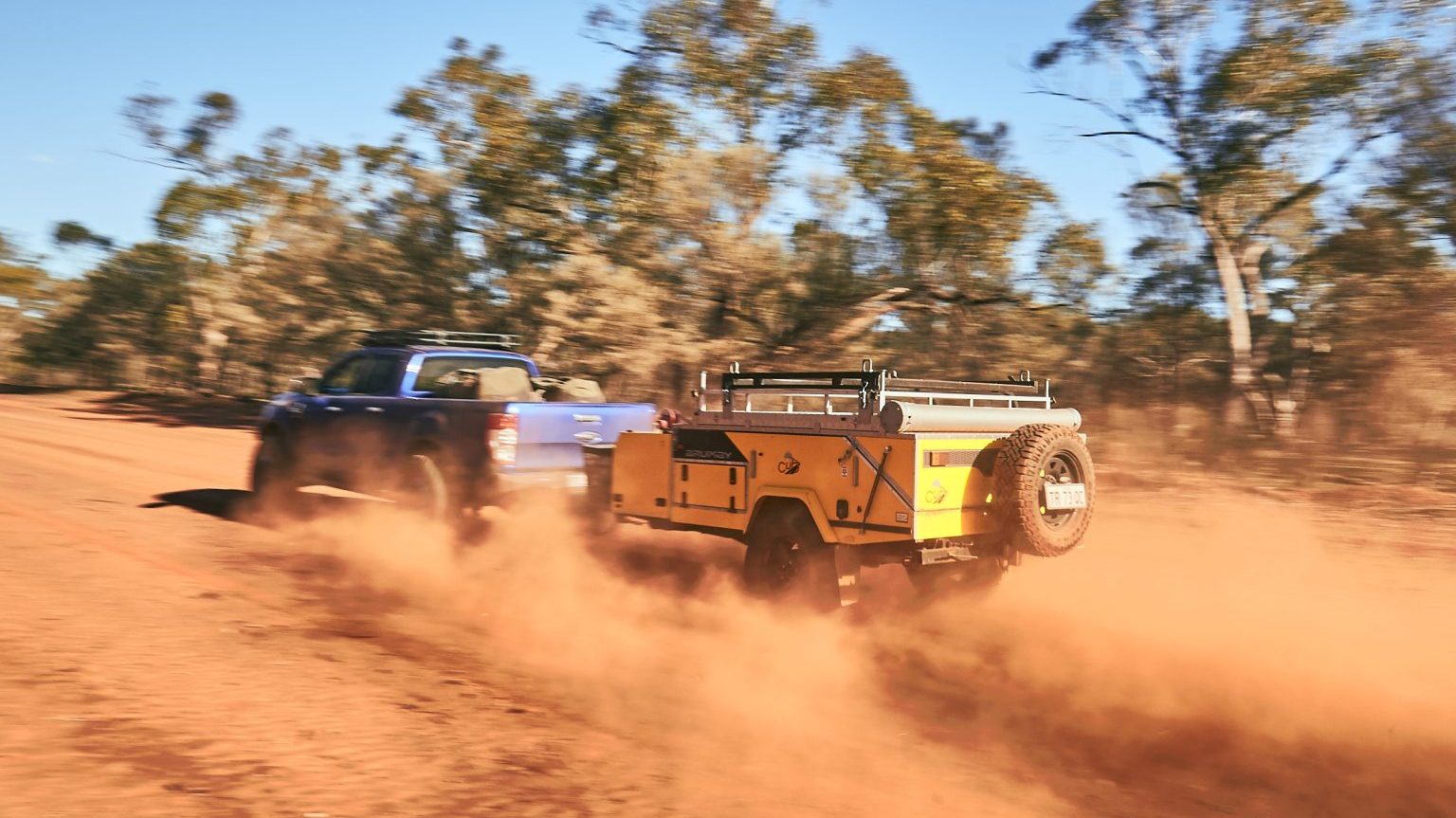
Do I really need to upgrade?
“But Dan” I hear you say. “The manufacturer knows what’s best for me so why should we mess with their design?”
You’re absolutely right, sort of.
The manufacturer knows what’s best for the majority of people who buy their vehicles. They also build their vehicles to suit a budget. See where I’m going here? They build these vehicles assuming they’ll reach their Gross Vehicle Mass (GVM) once in a blue moon and not every camping trip. They’re built assuming you haven’t changed tyre size (larger diameter tyres means more leverage on your brakes). Let’s be honest, even the best 4X4s you can buy new aren’t designed thinking their average customer is going to be up and down through hilly terrain all day with a camper in tow.
We use vehicles designed for the average punter, and then ask them to do extraordinary things. You wouldn’t expect to double a vehicles weight and have the engine move it just as well, so it’s crazy to think you can increase your 4X4s weight and expect it to stop as well as factory. So how do we ensure that when we push that middle pedal things actually slow down, and do it reliably? I’m glad you asked!
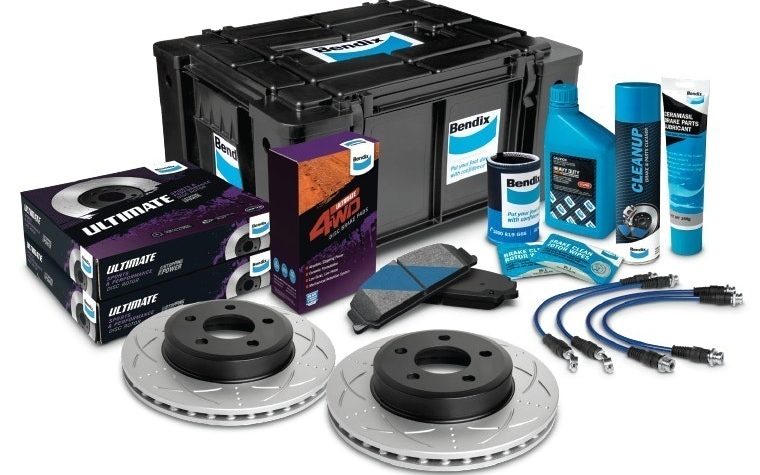
What’s in a brake system?
In order to know what to upgrade, it’s important to know what actually happens when you push the brake pedal. If you’re an old hat on the spanners feel free to skip to the next section.
Brake Booster
Ever noticed how your brake pedal is rock hard when your engine is off then softens right up when you turn the engine on? That’s the brake booster. It uses vacuum from the engine to amplify the force you apply to the brake pedal.
Master Cylinder
Bolted directly to the other side of your brake booster, the master cylinder takes that amplified pressure from the brake pedal and converts it into a hydraulic system.
Brake Lines
Think of the master cylinder like a tap, and the brake lines like a hose. The brake lines transport the hydraulic fluid from the master cylinder to the brakes on each corner.
Brake Caliper
Ever slowed a pushbike down by dragging your feet on the ground? That’s exactly what the brake caliper does, sorta. It takes the hydraulic pressure you’ve sent through the lines and then pushes the brake pads (your shoes) into the disc (the road). Simple eh?
Brake Pads
Typically made of an organic compound, your brake pads are the friction material used to actually slow you down. The more bite these have, the quicker you’ll stop
Brake Disc
Essentially connected directly to the wheel (through a hub). The brake disc is what the pads clamp down on and where the force is applied to actually slow you down.
Brake Drum
An inside out brake disc. Instead of the pads on the outside clamping down onto a disc, C shaped brake ‘shoes’ push out from the inside on the drum.
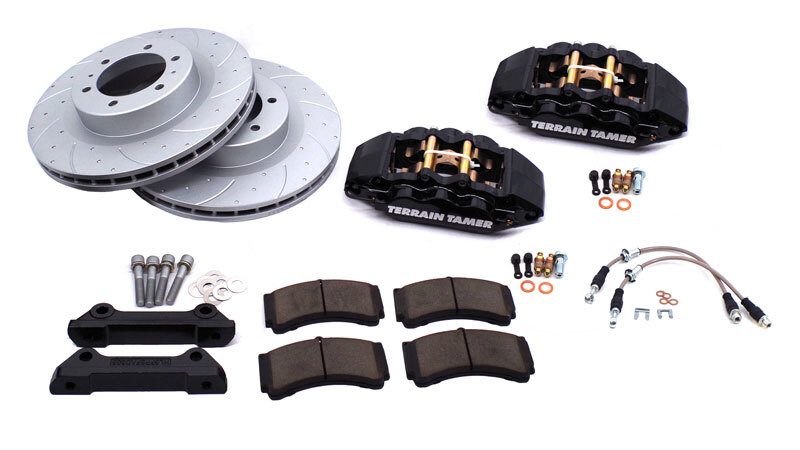
So what are my options?
Improved pads
Without a doubt the first port of call for anyone looking to improve their 4X4s braking performance, upgraded pads are a must have. They typically improve the factory braking ability in two ways. The first, is a more aggressive material allowing more friction to be applied to the rotor, improving your stopping power as a result. The second, is better heat resistance. As heat builds up in your brakes from sustained braking (like travelling through the Vic High Country for example) the pads can begin to ‘glaze’. The material breaks down, then hardens with a smooth surface. Not ideal for something where friction is the aim of the game. They’re a cheap, bolt on upgrade that can be done in less than an hour.
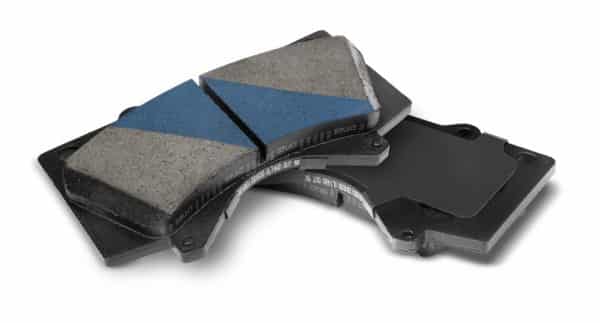
Improved rotors
Upgraded brake rotors are the next step in the line and improve your brake performance in more ways than one. The first is heat management. The hotter your brakes get, the worse they perform. Upgraded rotors will typically feature fancy metal compounds and internal venting with unique designs to hold off heat as long as possible, and to remove it as quick as possible to hold back brake fade in steep terrain and fully loaded. They can also feature drilled dimples, fully drilled holes, and slots in the rotors. As the pads heat up they give off microscopic amounts of gases that prevent the pad from making complete contact with the rotor. By giving those gases and brake dust somewhere to escape the pad can make better contact, apply better friction, and slow you down better.
Improved brake lines
One of the most frequently overlooked upgrades in any braking system is the brake lines themselves. Hydraulic fluid works by being incompressible. Apply 5mm of movement at one end and you’ll get 5mm of movement at the other. Perfect in a braking application where you want every bit of force from your foot applied to the brake pads. The problem is, the soft rubber brake lines on your 4X4 are prone to ballooning as they age. Even small expansion in these areas means some of the energy you’re applying to the pedal is working towards ballooning out the brake lines rather than actually stopping the vehicle. Swapping old lines out for new, or even better yet, swapping rubber lines out for steel braided lines will ensure you get as much stopping power as possible.
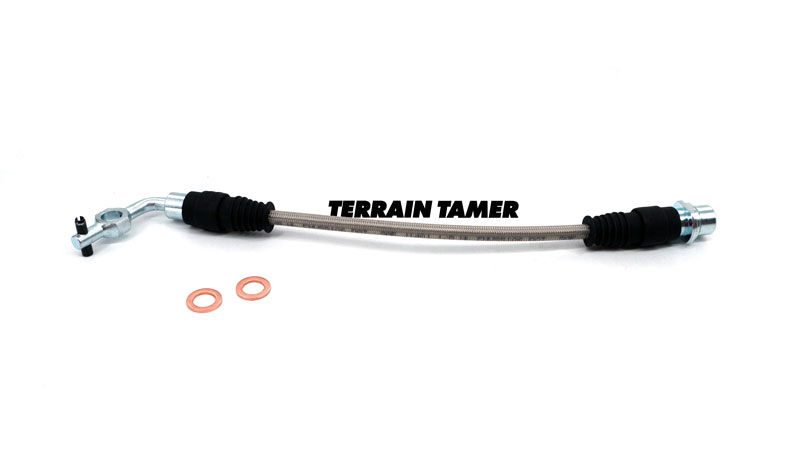
Improved brake boosters
Now this isn’t one every 4X4 needs to consider, but for some older vehicles the stock brake booster is a weak point. Dual diaphragm brake boosters essentially have two internal compartments for vacuum to be applied to, increasing how much amplification applied when you put your foot on the brake pedal. Hydraulic brake boosters are another popular upgrade that work by using the pressure from your power steering pump, rather than vacuum to turbocharge your leg.
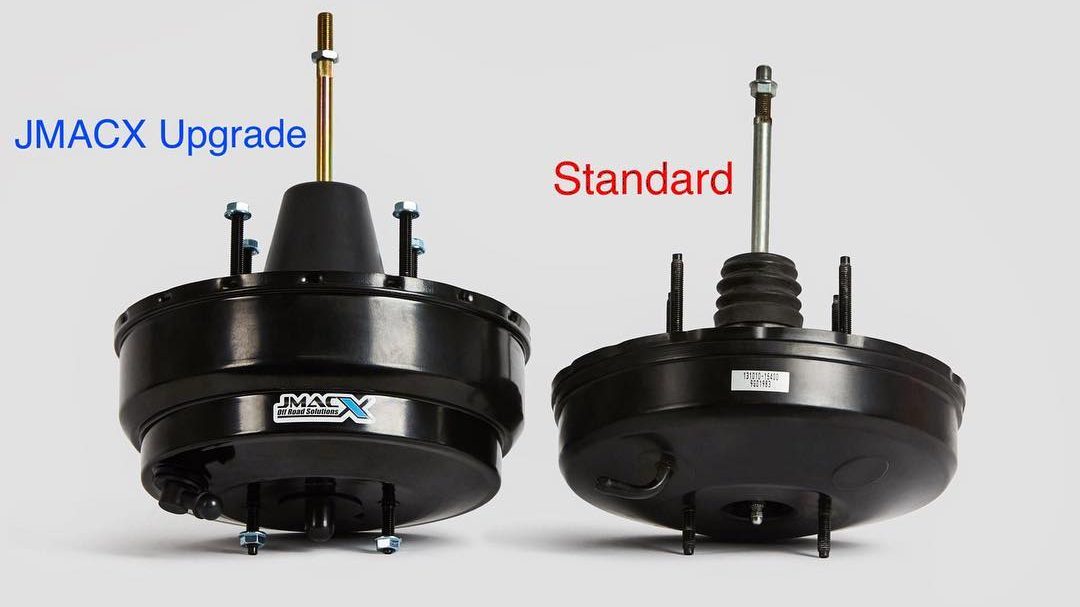
Disc brake conversions
Older wagons, and nearly every ute on the market will have a combination of disc brakes up front, and drum brakes in the rear. Now there’s nothing inherently wrong with drum brakes, they’re the go-to for heavy trucks so have proven themselves more than capable of slowing down heavy weights. But disc brakes by design are better at heat dissipation making them better suited for hilly terrain where you’re on and off the brakes a lot. They’re also better at working when wet, and far less affected by mud. Drum brakes can rust up, fill with mud, and completely stop functioning where disc brakes will keep on kicking. A variety of companies offer disc brake conversion kits to suit most popular makes and models so are well worth a look at.
Big brake kits
If money is no object and nothing but the best will do then it’s time to consider a big brake kit. Just like increasing the diameter of your tyres increases leverage over the brakes (bad), increasing the diameter of your brakes increases leverage over the tyres (good). Think of it like a sea saw. Big tyres changes the pivot point, big brakes changes it back. A big brake kit will also typically feature larger calipers and brake pads so you not only get extra leverage, but get extra clamping force as well. The only down side is the larger the disc and caliper, the larger wheel you’ll need to run to clear them. It’s not an issue with anything late model running 17in rims, but you won’t fit a set of six piston brakes inside a 15in wheel on your old GQ.





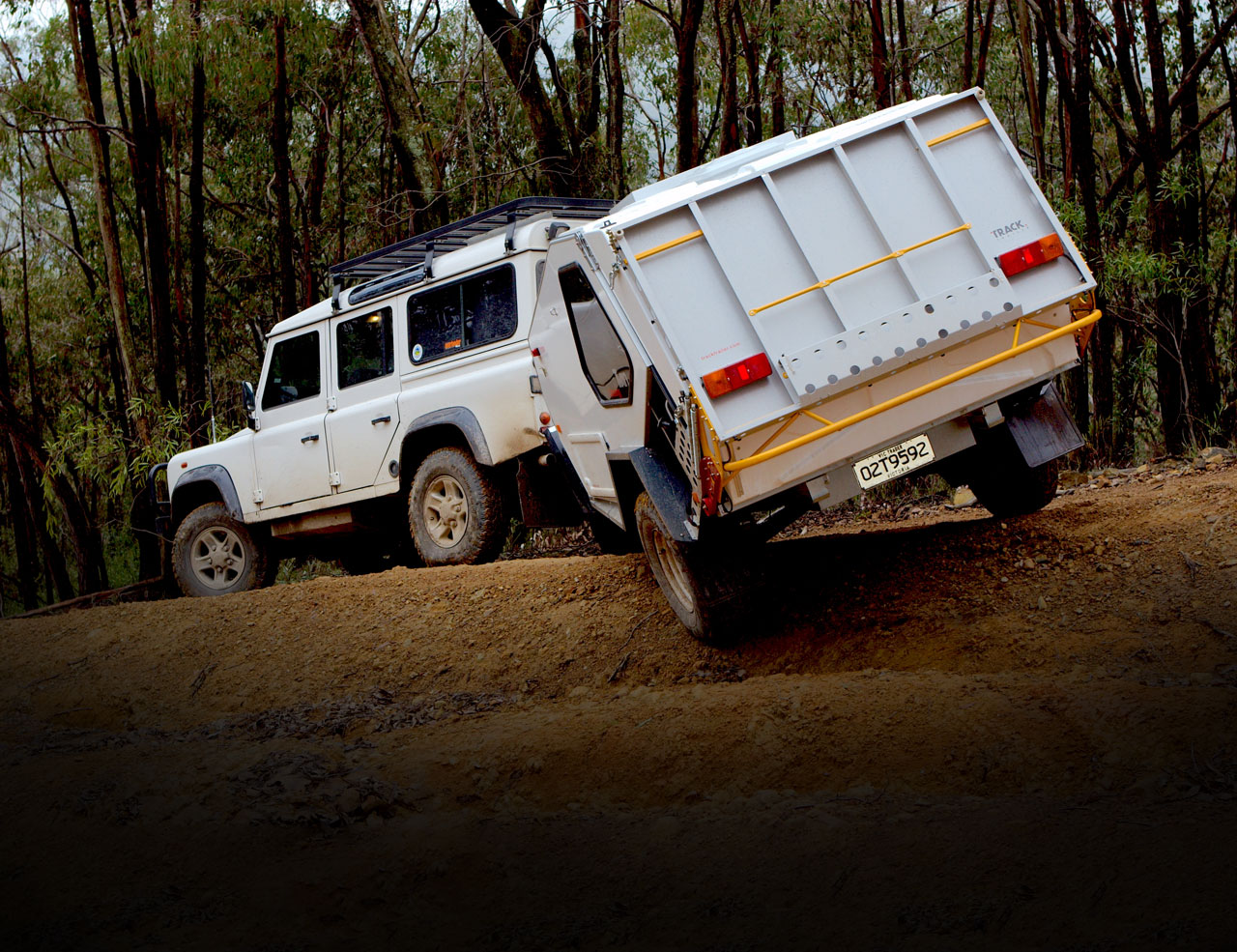
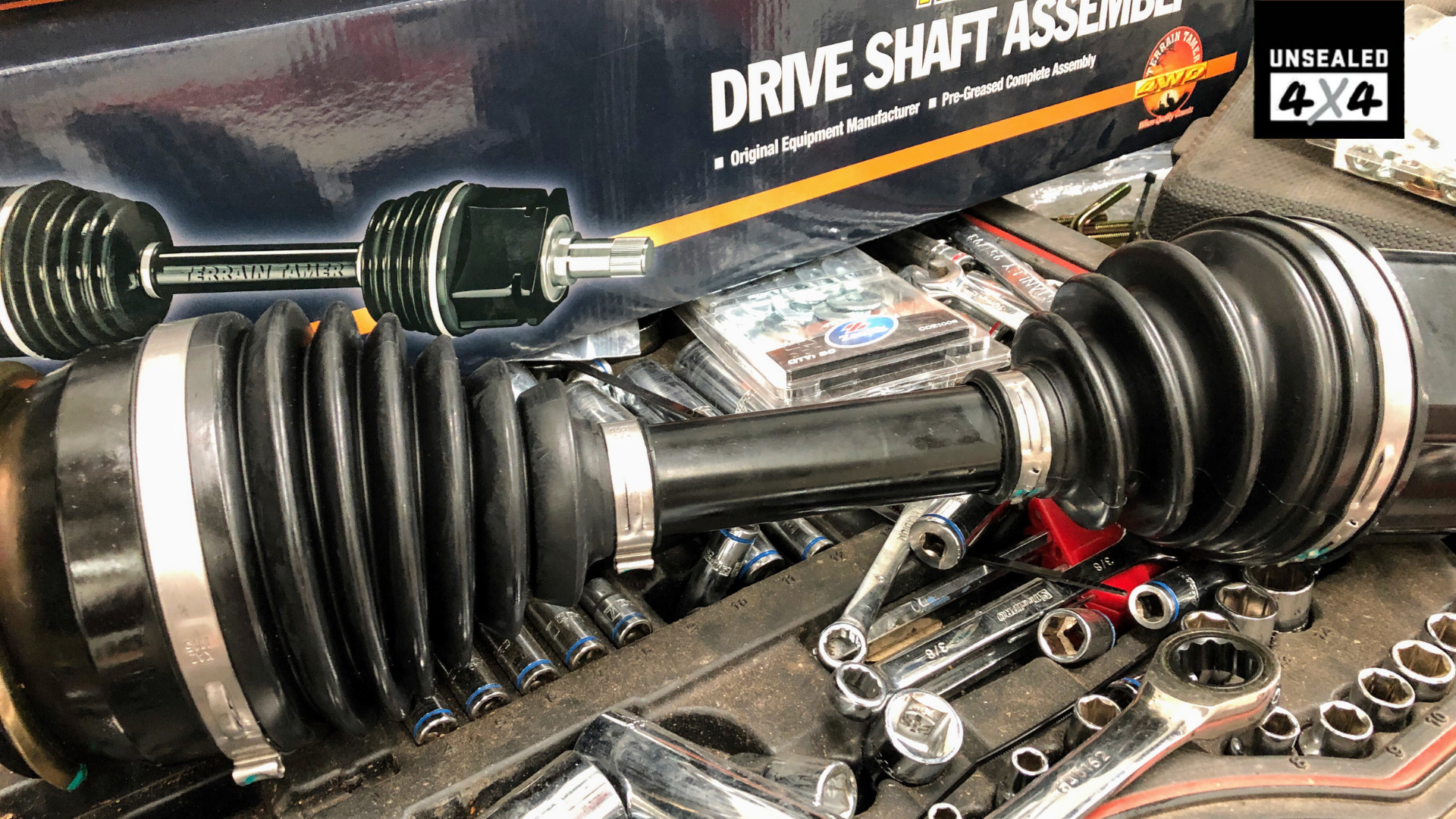

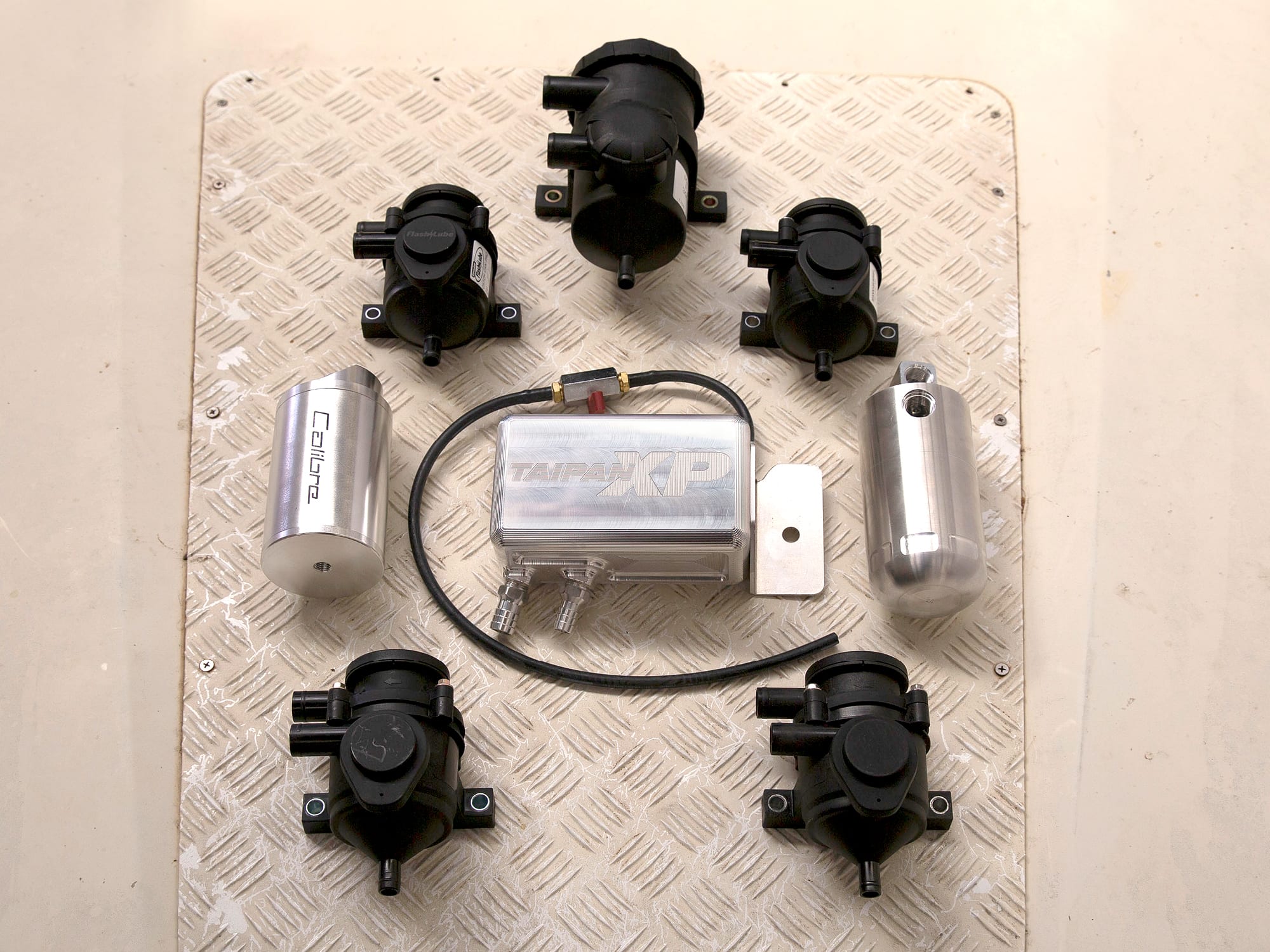

AHHHH!! So that’s how a vehicle can have the back end cut off and a 6 wheel conversion added – with no extra braking changes on the front, no extra alterations to the factory transmission, and no extra sub-frame changes to bring it up to the capacity of a truck?
The factory has built all of that in “just in case?”
HI I OWN A NISSAN GQ 1994 WAGON IN 2013 I FITTED A 6.5 CHEV V8 DIESEL FROM BRUNSWICK W.A. THE HOLE KIT . PLUSE LIFT KIT 60 ML LIFTFRONT & BACK SLOTED & DRILED DISC & NEW CALAPERS : DROP BOX : OF SET CASTER KIT : ALL NEW BUSHERS SHOCKS ECT , BUT ITS NOT BRAKING AS GOOD AS IT USE TO WHEN I HAD BENDIX STEEL PADS THEY WOOD SQUELL BUT THE HOTER THEY GOT THE BETTER THEY WOOD BRAKE, SO COULD YOU GIVE ME SOME ADVICE